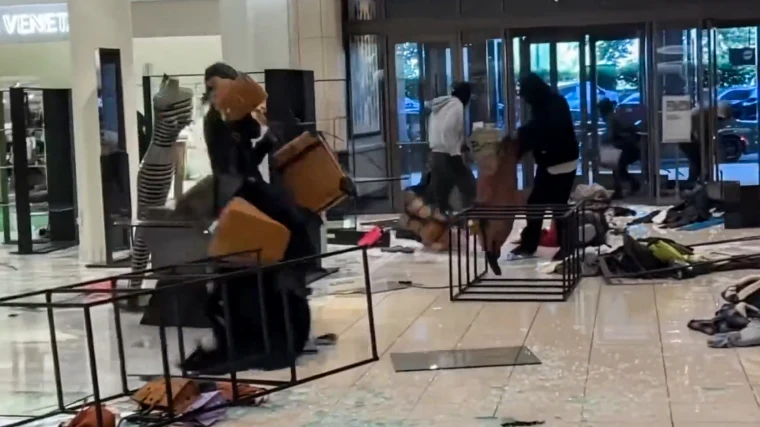Insanity -Doing the same thing over and over again expecting a different result……welcome to Boston where the mayor wants to bring California’s laws that increased crime and theft to the East Coast. Welcome to Democrat logic!!!
In a bold move that challenges traditional policing and criminal justice norms, Boston’s Democratic mayor has ignited a fiery debate by suggesting that non-violent theft should not result in prosecution and proposing the abolition of the city’s gang registry. This controversial stance raises significant concerns, mirroring the distressing outcomes witnessed in similar policies implemented in other cities, most notably in California.
The California Example: A Cautionary Tale
California’s recent history with lenient crime policies offers a stark warning. Cities like San Francisco have experienced a surge in high-profile “smash-and-grab” incidents at luxury retailers, significantly impacting the local economy and public perception of safety.
- Escalating Retail Thefts: Following the implementation of Proposition 47, which reclassified non-violent thefts involving values under $950 as misdemeanors, California saw a marked increase in shoplifting and commercial burglaries. This policy intended to reduce incarceration rates but inadvertently encouraged petty criminals, leading to a 28.7% increase in shoplifting rates in 2022 alone.
- Impact on Local Businesses: The surge in thefts has had a chilling effect on local businesses. Many retailers, facing unchecked pilfering, have been forced to shut down or increase security measures, pushing operational costs even higher.
- Commercial Burglaries and Robberies: Alongside shoplifting, California reported significant rises in more severe crimes like commercial burglaries and robberies. In 2022, Los Angeles County recorded the highest rate of commercial robberies, a clear sign that criminal activities were becoming more brazen.
- Economic and Social Costs: The financial ramifications extend beyond direct losses from thefts. There’s a broader economic impact including decreased consumer foot traffic and a tarnished city image that deters potential business investments and tourism.
The Boston Proposal: Prospects and Challenges
The mayor’s proposal aims to shift the focus from punishment to prevention and rehabilitation, suggesting that addressing the root causes of crime—such as poverty and lack of education—will lead to a healthier society. However, critics argue that without the deterrent effect of prosecution, crime rates could escalate, leading to an environment of lawlessness similar to what some California cities are currently battling.
Navigating Public Policy and Safety
The debate in Boston highlights a critical crossroad for urban governance and public safety:
- Balancing Act: Finding the right balance between progressive reforms and maintaining public safety is crucial. Cities need innovative strategies that prevent crime and promote social justice without sacrificing law and order.
- Community Involvement: Engaging community leaders, residents, and businesses in policy-making processes can help tailor solutions that address local needs and concerns, potentially preventing the unintended consequences seen in California.
- Monitoring and Evaluation: Continuous monitoring of policy impacts and willingness to make adjustments based on empirical evidence will be key to ensuring that reforms do not compromise community well-being.
Conclusion: A Thoughtful Approach to Urban Safety
As Boston considers a radical change in its approach to crime, it stands at a pivotal moment that could redefine urban safety and justice. Drawing lessons from California’s experiences, it becomes evident that while reform is necessary, it must be approached with caution, clear goals, and a robust strategy to protect the interests of all city residents.

